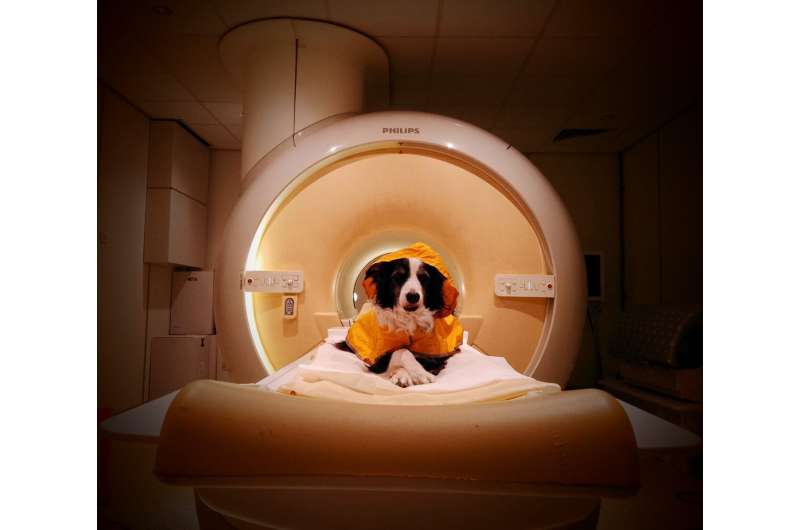This article has been reviewed according to Science X's editorial process and policies. Editors have highlighted the following attributes while ensuring the content's credibility:
fact-checked
peer-reviewed publication
trusted source
proofread
Pickier dogs found to have pickier brains

Dogs' food preferences are mirrored in their brain activity, particularly within their caudate nuclei -a brain region associated with reward processing, a new study combining behavioral and neuroimaging data by researchers from the Department of Ethology, Eötvös Loránd University (Hungary) and Symrise Pet Food (France) finds.
The study, which seamlessly blends behavioral observations with advanced neuroimaging techniques, offers novel insights into the influence of food quality on dogs' motivation. This work has been published in Scientific Reports.
Similar to people, when it comes to food, some dogs are pickier, while others are more easygoing. However, even food that may not be the tastiest is still motivating. Through two experiments, this study tested the influence of food quality on dogs' motivation to solve a problem and their corresponding brain representations.
In the first experiment, a cohort of twenty family dogs was trained to unwrap a box. Subsequently, these dogs were taught to associate specific tones with two distinct food types: smoked ham, a highly rewarding treat, and fiber cookies, a less rewarding option.
Finally, the dogs unwrapped a box while one of the sounds played, and researchers used the unwrapping time to measure their motivation to obtain the associated food. The results showed that the dogs unwrapped the box quicker when the sound associated with the higher quality food, the smoked ham, was played.
The second experiment involved another group of twenty family dogs, which were trained to remain still in a brain scanner. Initially, a scanning session exposed the dogs to both sounds, which held no meaning at this stage. Following this, the dogs participated in the wrapped box experiment. Finally, the dogs underwent another scanning session during which they listened to the sounds again, but this time, each sound had an association with either smoked ham or fiber cookies.
The focus of the brain analysis centered on observing changes in the caudate nucleus, a brain region linked to reward processing across species. Compared to the first session, the caudate nucleus exhibited a heightened response in the second session, responding more strongly to both sounds. Remarkably, it displayed an even more pronounced response to the sound associated with the highly rewarding smoked ham.
"While prior research has primarily focused on how the dog brain responds to rewards versus non-rewards, our study takes a step further, delving into the representation of two food rewards varying in quality. Our findings highlight that the caudate nuclei not merely process rewards but also distinguish between rewards based on their quality," explains Dorottya Ujfalussy, senior author of the study.
Of course, not all showed the same performance. The greater the discrepancy in the speed at which dogs unwrapped the two boxes, the more discernible their brain response patterns became for the two sounds in their right caudate nucleus.
"It is exciting to be able to 'see' how dogs represent different foods in their brains and observe how the quality of the food influences their motivation. We were surprised to discover a distinct positive correlation between the behavior of the dogs and their brain representations. The direction of this relationship still intrigues us; based on our data, we cannot determine whether a more distinct brain representation of both sounds enables a better behavioral performance or if it operates in the reverse. It's likely that this process is not solely unidirectional," says Laura V. Cuaya, first author of the study.
More information: Laura V. Cuaya et al, Representation of rewards differing in their hedonic valence in the caudate nucleus correlates with the performance in a problem-solving task in dogs (Canis familiaris), Scientific Reports (2023). DOI: 10.1038/s41598-023-40539-1
Journal information: Scientific Reports
Provided by Eötvös Loránd University

















